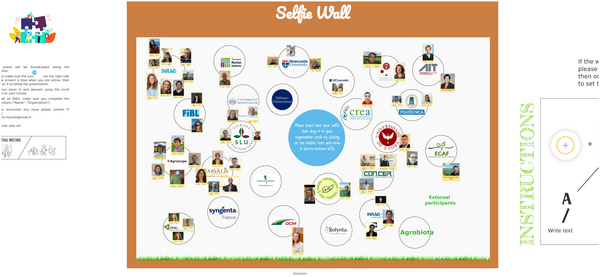SolACE partners gathered virtually again this year for their 4th Annual Meeting, which took place from the 8th to the 10th of June 2021, a couple of weeks before completing the annual report presented to the European Commission and external reviewers on the 9th of July 2021. This was the consortium's first opportunity to meet the newly appointed REA (Research Executive Agency) Project Officer, Ms Patrizia Tenerelli, and present the work performed from the beginning of SolACE, particularly the work conducted during the 4th year of the project (until April 2021). Here are some of the highlights:
- The Handbook of Protocols and Methodology: a harmonised document that has been continuously updated since the start of the project to collect the approaches developed/used by SolACE partners. It is linked to the Data Template, a repository for data collected by SolACE with harmonised formats.
- Complementary experiments were undertaken for diverse genotypes in each crop species (bread wheat, durum wheat and potato). These have helped scientists identify key root/microbiome and aboveground traits contributing to crop tolerance to combined water and N or P limitations. A substantial effort has been dedicated to phenotyping root system and shoot architecture in controlled environments and field trials (yield and phenology) in large diversity panels for each crop. Genotype-specific plasticity may be overwhelming at the root architecture level, preventing the isolation of unique traits that support performance.
- Microbial strain combinations and formulations, crop rotations and genotype mixtures were assessed in greenhouse conditions for their potential to alleviate drought and N or P stress, and further tested in field trials across Europe. Crop performance and relevant plant traits have been assessed, as well as belowground microbiome characteristics. The analyses of the produced datasets and field trials are ongoing. Stakeholder workshops were held to collect feedback on tested innovations.
- Novel breeding strategies and tools were designed: for investigating marker-trait associations and new Quantitative Trait Loci (QTL) for above and belowground traits of crop stress adaptations. Gene-derived markers have then been developed. Genomic selection models based on root traits have been designed in bread and durum wheat, and genotypes derived from this approach are being tested. A participatory breeding strategy for durum wheat is also ongoing in three European farming communities. New hybrids in both potatoes and bread wheat have been produced for adaptation to combined stresses.
- Seven farmer networks were established: to test combinations of novel genotypes and management practices on farms across Europe. These on-farm experiments showed the potential of grain legumes in a rotation to reduce the carbon footprint of cereal crops and provide an improved margin to farmers through lower costs, as shown by a multicriteria approach (life cycle analysis). On-farm experiments in collaboration with farmers are ongoing to further assess inoculants, crop hybrids, and conservation agriculture approaches.
- SolACE partners have engaged a diversity of stakeholders: via three stakeholder events, interviews, emails, newsletters, etc. Various dissemination materials have been produced, including practice abstracts, videos, training materials, publications in specialised and scientific press and communications at conferences. Additionally, the first policy brief has been published.
SolACE is now entering its final stage as the project is coming to its end by 2022. Many more novel results and impacts are expected in the coming months.
Further information
SolACE farmer networks
SolACE field trails and phenotyping platforms
SolACE communications


 tap and then scroll down to the Add to Home Screen command.
tap and then scroll down to the Add to Home Screen command.
Disqus
In order to use the comment function, you must register with the third-party provider "Disqus".
When you activate this function, your browser establishes a direct connection with the servers of the third-party provider. We would like to point out that data is transmitted to the third-party provider after activation, and the latter may set cookies that can also be used for analysis and marketing purposes. For more information, please refer to our privacy policy.
Activate